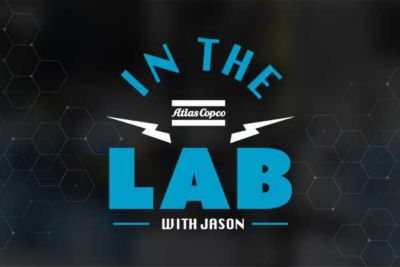Tightening Technique
Tightening is all about achieving the right clamp force in a joint for it to work and function properly. Understanding of tightening technique is essential to choose the right tightening solution that will fulfill your specific needs.
About screw joint
Screw joints are the most common way of joining components due the advantages in simplicity of design and assembly, easy disassembly, productivity and in the end - cost. A screw is exposed to tensile load, to torsion and sometimes also to a shear load. The tensile load corresponds to the force that clamps the joint members together. But due to difficulties measuring clamp force the tightening torque is often used as they correspond to each other.
The Tightening Process
The tightening process has a major influence on the quality of the screw joint. The goal for the tightening process is to achieve enough clamp force to hold the joint together. A process which achieves the required clamp force with a minimum of scatter will give a high quality joint. The process is determined by: • Torque application method; hand tightening, continuous drive and discontinuous drive. • Tightening control method; torque, angle or gradient. • Monitoring capabilities; A tool or system which can monitor the controlled and non-controlled parameters • will give a higher confidence in the process and quality of the joint.
Different torque application methods
Hand tightening is often carried out using a torque wrench. The wrench is set to a predefined torque value and the operator will be notified when the correct torque is reached. Advantages with this solution is the ease of use and setup. Disadvantages are low productivity and limited tightening control capabilities even though there are advanced types of wrenches which can measure the angle thus allowing the use of angle control. Tools with continuous drive/direct driven tools can both be electric and pneumatically driven. In general pneumatic tools due shut off via a mechanical clutch when the set torque is reached and electric tools can be equipped with sensors to control and monitor torque, angle and gradient. Controlling and measuring more parameters will increase the confidence in the process. The discontinuous drive method use inertia which is released intermittently during tightening. This is what is found in impact and pulse tools. Advantages are fast tightening with low reaction force even a high torques. Disadvantages are that in general results scatter more than with a direct driven tool. Most common tools of this type does not have any type of sensors to but there are products available with sensors. In general the scatter in clamp force is lower for direct driven tools and when using gradient control and angle control rather than when using impact/pulse tools and torque control. Using more advanced control methods and monitoring methods allow downsizing of the fastener with weight reduction as result. However, in this case the choice of tool have to be set in the design phase of the product. Want to know even more about tightening technique or have any questions? Get in contact with your Atlas Copco representative for assistance.
Download our Pocket Guides to find out more
- Pocket guide on hem flange bonding 5.2 MB, PDF
- Pocket Guide to Tightening Technique 3.2 MB, PDF
- Pocket Guide to Grinding Technique 2.7 MB, PDF
- Pocket Guide Vibrations 1.7 MB, PDF
- Pocket Guide to Screwdriving 1.5 MB, PDF
- Pocket Guide Air tools installation 1.1 MB, PDF
- Pocket Guide to Air motors 6.5 MB
- Pocket Guide Li-Ion battery management 911.7 kB, PDF
- Power Focus 6000 and Tensor STR 3.4 MB, PDF
- Pocket Guide Power Focus 6000
- Pocket Guide Calibration and testing of tightening systems 17.3 MB, PDF
- Pocket guide on adhesive bonding 4.2 MB, PDF
- Pocket Guide Einführung in die Klebetechnik 4.7 MB, PDF
- Pocket guide on dispensing technique 4 MB, PDF
- Pocket guide Dosiertechnik 11.4 MB, PDF
- Pocket guide SQS3 and PF6 FlexSystem 4.4 MB, PDF
- Pocket guide SQS3 and PMACS4000 4.4 MB, PDF
- Pocket guide SQS3 and STwrench 4.4 MB, PDF
- Pocket guide SQS3 and Focus 61 4.8 MB, PDF
- Pocket guide SQS3 and PF6000 2.1 MB, PDF
- Pocket guide SQS3 and MTF6000 2.9 MB, PDF
- Pocket guide to cable management 3.6 MB, PDF
- Pocket guide - the art of ergonomics 5.1 MB
- The world of sockets and bits - pocket guide cover 1 MB, PNG
- The world of sockets and bits - your handbook 9.3 MB, PDF
- Hold and Drive solutions - your pocket guide 3.5 MB, PDF
- Hold and Drive pocket guide cover 365.1 kB, PNG
Related subjects
Ergonomics
We know that good ergonomics can have a significant impact on our customer's productivity, quality and work environment





